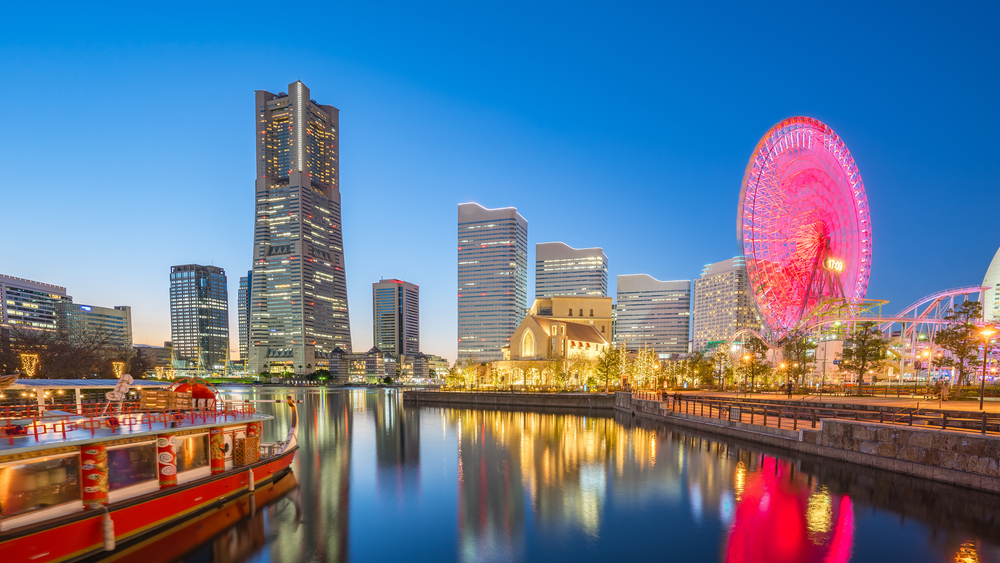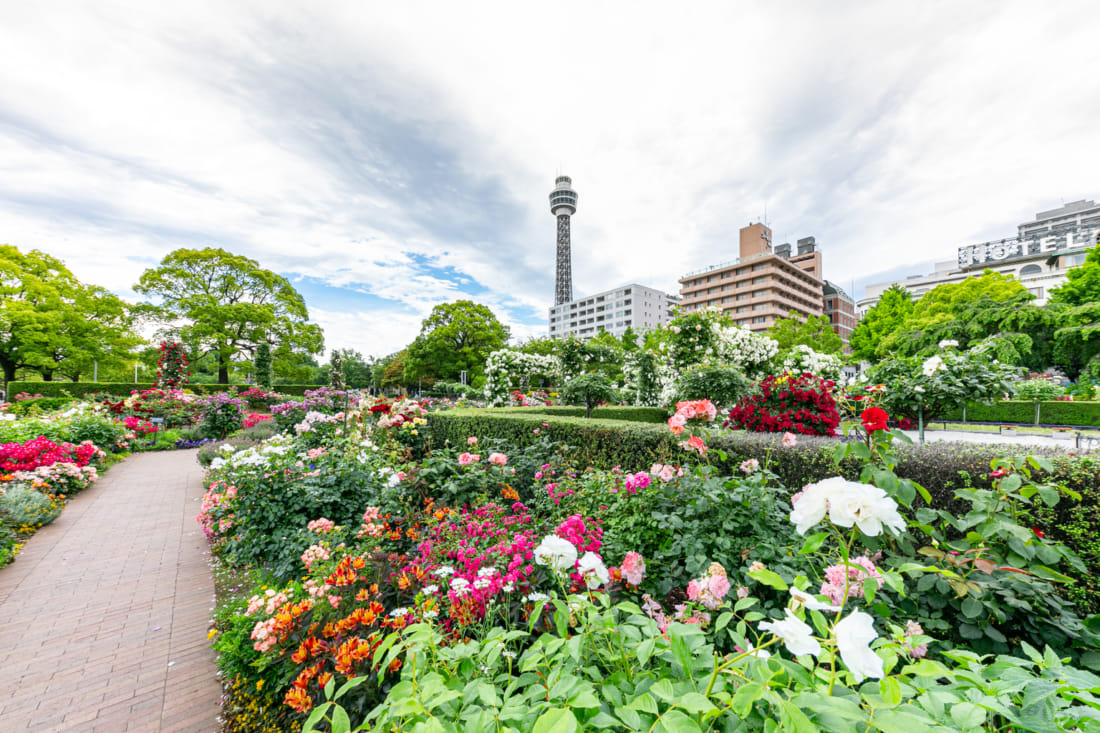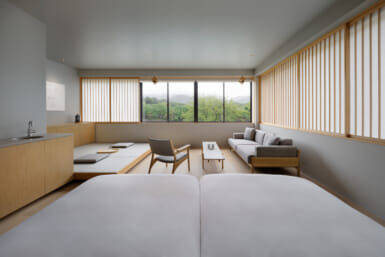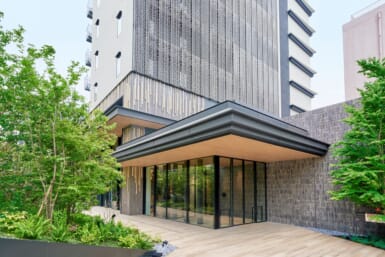Situated on the Tokyo Bay, Yokohama has long been a port city, from its time as a little fishing village to its prolific present. It was the first port in Japan to receive Western traders. In keeping with its rich history, the city continues to serve as Japan’s portal to the world. With its plentiful meeting venues, hotels and greenery and a rich food culture it is a prime spot for both business and recreation. Situated only 30 minutes from Haneda Airport, and less than 30 minutes from Tokyo Station, Yokohama is easily accessible to international and domestic commuters.
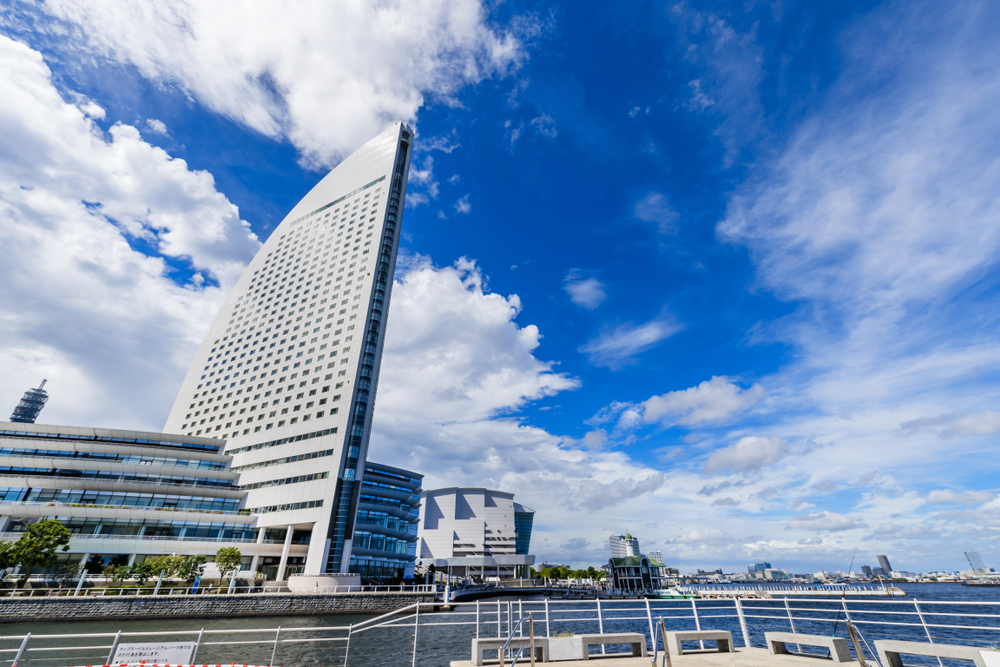
Photo by picture cells / Shutterstock.com
PACIFICO Yokohama: One of the Largest Conference Centers in the World
PACIFICO Yokohama is called Japan’s best conference center and is one of the world’s largest complexes thereof. Situated in front of the water in the cutting-edge Minato Mirai 21 district, the sweeping PACIFICO Yokohama complex looks more like something you’d find in Tokyo Midtown. It includes a theater-style hall, conference rooms, an exhibition hall, a hotel and over 200 restaurants to form one of the most iconic cityscapes in the Tokyo region.
That unmistakable, sail-shaped building sitting on Yokohama Port is PACIFICO Yokohama’s premium hotel – InterContinental Yokohama Grand. Immediately behind is the National Convention Hall of Yokohama, equipped with over 5,000 seats, a venue which has held countless events from international art festivals to concerts and boat shows.
Taking its credo of “internationality” and “openness” to heart, all the facilities, from the exhibition space to the surrounding greenery, are of an open and seamless design fitting to virtually any occasion. The spring of 2020 saw the opening of a new multifunctional convention center, the Pacifico Yokohama North, complete with 42 meeting rooms and a huge, columnless hall.
A set of health precautions for holding conventions/conferences has been established by Yokohama and its venues. These include sufficient spacing in venues, shortened hours and temperature screenings for visitors and staff, among other measures. For further details, see here.
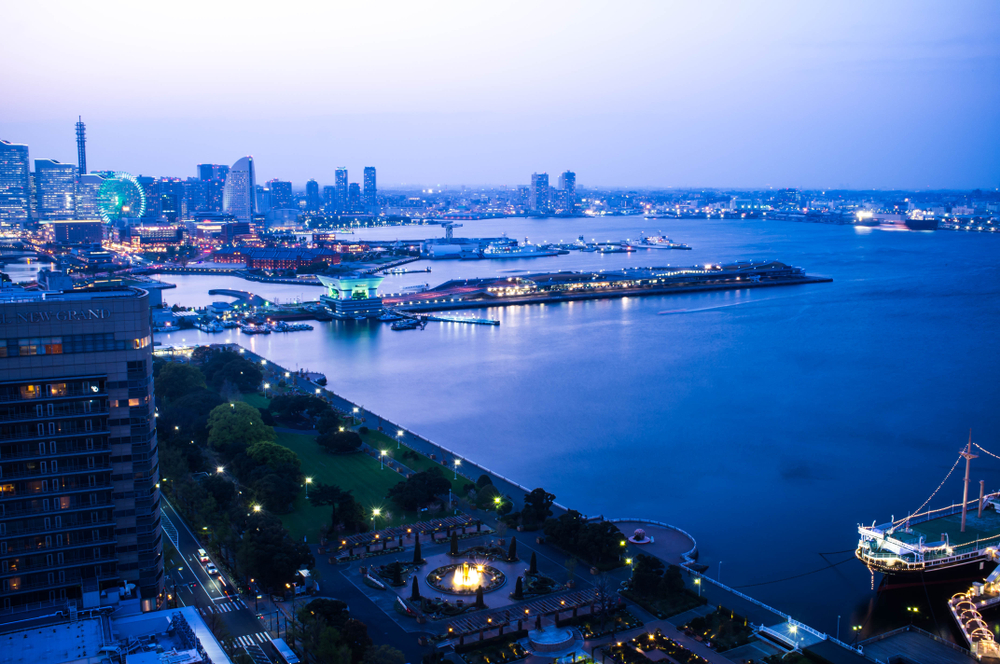
NECHAPHAT / Shutterstock.com
Premier Accommodations Abound in Yokohama
As the site of a prominent leader of Japan’s industry – accommodating the headquarters of such companies as Panasonic, Nissan, Fuji Xerox and a growing number of foreign IT giants – Yokohama must of course have an equally dense system of hotels. A number of lodgings opened just last year: The Hyatt Regency Yokohama is a new luxury hotel in the heart of Yokohama with bay view suites, complimentary WiFi, a gym, meeting facilities, business services and several exceptional eateries, among other amenities.
The Kahala Hotel & Resort Yokohama, a luxury chain born in Honolulu, blends sleek modern design with the warmest hospitality; with a spa, a pool and fantastic city- and sea-views, if relaxation is an utmost priority the Kahala is your best option. The Oakwood Suites Yokohama, also surrounded by sweeping seascape, belongs to the topmost floors of Yokohama’s tallest residential tower. These apartments are perfect for single customers or for those looking for a homier space. Amenities include a Nespresso machine, washer and dryer, high-speed WiFi and a well-equipped kitchen. But with dozens of hotels in the city, your choices are many. Hotel Associa Shin-Yokohama, right above Shin-Yokohama Station, is widely acclaimed and especially accessible and provides reasonable lodging plans for the thriftier traveler.
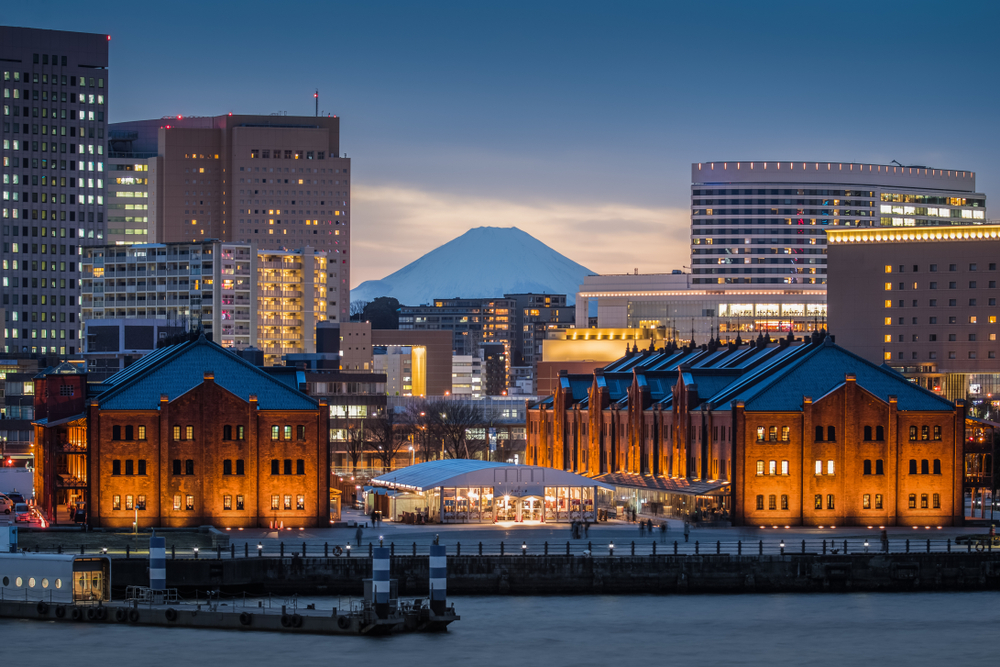
The Convenience of Traveling Around Yokohama
It’s unsurprising that Yokohama is ahead of the curve when it comes to transportation and city planning. Not only are the wide roads and walkways sparkling clean – they also allow for ample social distancing – but there are a number of eco-friendly options for navigating the area. There is a bike-share service with docking ports all along the port, as well as hydrogen fuel-cell municipal buses. These are part of a wider effort to tackle environmental degradation while continually improving the quality of life of citizens and expats. The city’s initiatives for an eco-friendly society have included the establishment of an experimental wind power plant, the Hama Wing; the promotion of other biofuels and recycling; the dissemination of wooden straws; and efforts to create more sustainable consumption in residential areas.
World-class Parks, Shopping, Dining and More in Yokohama
And as a pleasant aftereffect of this emphasis on the environment, the city enjoys some of the most gorgeous parks and green space in the country. Yamashita Park is a must-see, famous for its breathtaking views of the water and its preeminence as a date spot. Sankeien Garden, accessible by municipal bus, feels more removed from the urban bustle. In the fabric of this vast Japanese-style garden is a variety of seasonal flower species (particularly beautiful in the early spring), a pond, numerous bridges and streams and even a stately pagoda.
If shopping is more your stride, a trip to Yamashita Park takes you the iconic Red Brick Warehouse, or Akarenga, now a shopping and dining complex. With a circulating lineup of quirky jewelry, clothing, variety goods and interior deco shops, as well as a great selection of restaurants, from fast food to some of the best Western-style breakfast, the Akarenga is a staple of Yokohama recreational life. Erected in 2019, the Hammerhead is a much newer development. The shopping mall can satisfy just about any craving, from bubble tea and breakfast fixings to seafood and, most notably, ramen – there is an entire hall of ramen shops. If you’re buying a gift for a foodie, this is the place to go.
Near the Hammerhead is Marine & Walk, a stylish, open-air shopping complex. There is a good range of dining options, from Zebra Coffee for the casual croissant to sushi, burrata, Italian and Spanish. Like the Akarenga, it is a premier spot for shopping for both the home and the closet – no mere mall, but rife with unique pieces. A number of international stores, like the Los Angeles clothier Ron Herman and Free Park, curator-retailer of “design and arts goods” from bags to interior decoration, make shopping more akin to meditative self-care than a hurried process. This luxuriant boutique spirit saturates much of Yokohama’s shopping scene.
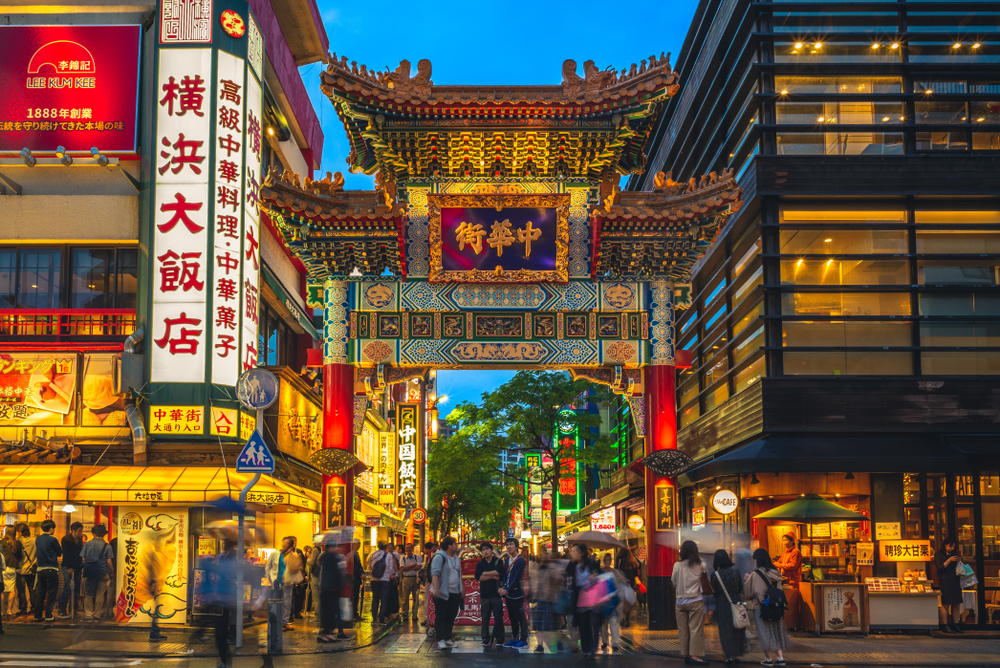
Photo by Richie Chan / Shutterstock.com
Yokohama: Home to Culture and Tradition
As a complement, there is a rich culinary scene. Doubtless, these shopping centers are great places to get a bite to eat – but there is an unforgettable timeworn food culture integral to any experience of the city. With more than 600 shops, from the bustling family restaurant to the food stalls lining the street, Japan’s largest Chinatown offers cuisines from Peking duck to dim sum.
Yokohama is also the birthplace of the iconic Napolitan and Seafood Doria, and has many nostalgic Western-style eateries. It was also the first place in Japan to introduce instant noodles; a must-visit for ramen enthusiasts is the Ramen Amusement Park in Shin-Yokohama, which simulates a mid-20th century Japanese townscape.
With a convenient location and world-class conference centers, accommodations, shopping, dining and more, Yokohama is prepared to welcome international guest from all walks of life, from all over the world. The wait to make the most of the cosmopolitan Japanese city will be worth it.
[Sponsored Post]

